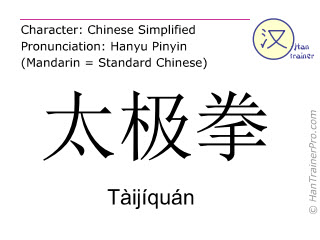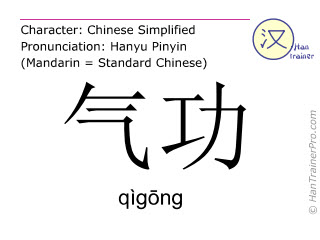Tai translates literally as “great” or “large.” Chi is used as a superlative, for example, “biggest” or “most ultimate.” Together, they are used to characterize the philosophical concept of the all-encompassing yin-yang principle, often translated as Supreme Ultimate.
Chuan generaly is translated as “fist” or “boxing.” Sometimes, it is described as a manifestation, as the closing fist expresses a sense of practical materialization.
Together, Tai Chi Chuan is variously translated as Supreme Ultimate Boxing, GHreat Extremes Boxing, and Grand Ultimate Fist. It describes a form of boxing or exercise that is based on the principles of yin and yang, dynamic change and transformation, integrating the body and mind, and the internal and the external.
Chi vs. Qi and Tai Chi vs. Qigong
The character for “Qi” is different from the “chi” of Tai Chi. Qi is like the word snow in the Eskimo language — it means many things and yet it is hard to define.”Qi” refers to vital energy, information, breath, or spirit. Qi is not unique to humans, but rather is what pervades the whole universe.
Qi is the first part of a very diverse set of mind-body practices called Qigong. Broadly speaking, Qigong translates as the cultivation or mastery of Qi. Some styles of Qigong are oriented more toward health and spirituality, in which you sit and do breathing and meditative exercises. Other styles are more vigorous and are designed to enhance your martial art skills. Most people think of Tai Chi as a form of Qigong because it cultivates, moves and helps manage Qi.
Like many ancient traditions, the early history of Tai Chi is a mixture of fact and myth This history includes the interweaving of three deep influences Chinese culture. Those influences are martial arts, healing arts, and philosophy. (Wayne pp.15,16)
Looking deeper at these influences is one of the missions of this blog.
FEATURED IMAGE: Snohomish River at Snohomish, Washington, January 25, 2019.
Follow on Instagram.
. . . .
But now it’s time to do! You are encouraged to visit either Post #3 Exercises or #4 Traditional Elements, pick a clip, click on the full-screen icon, bottom right, and practice along. By your daily practice, a branch bud will sprout, and it will be the birth of your style of Tai Chi.



